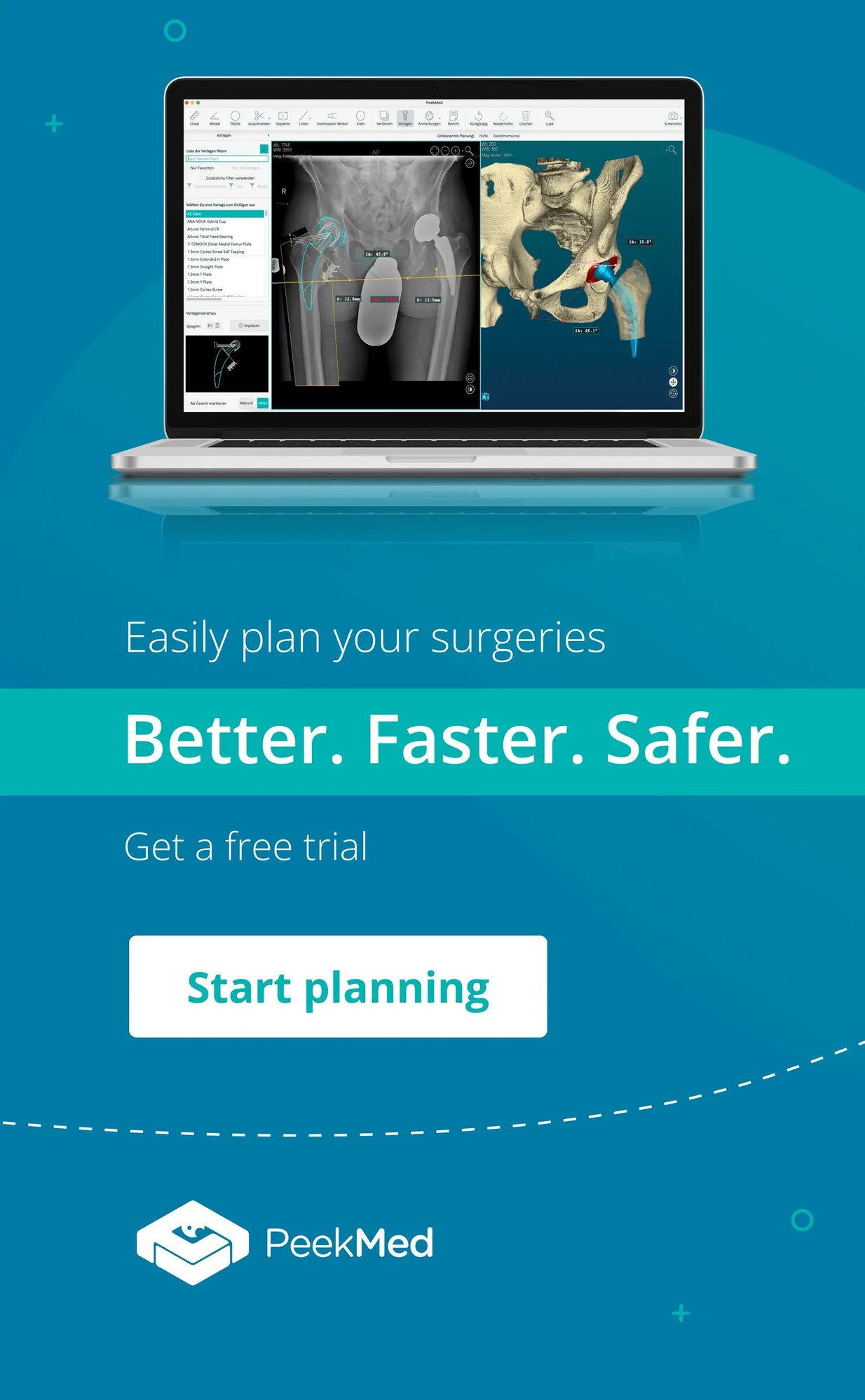PeekMed
Pediatric orthopedics is a specialized branch of orthopedic surgery that focuses on the diagnosis, treatment, and prevention of musculoskeletal disorders in children. Children's musculoskeletal systems are unique due to their ongoing growth and development, making them susceptible to a wide range of conditions that require specialized care.
In this article, we will delve into the unique aspects of pediatric orthopedics and explore the latest advancements in the field.
Pediatric Orthopedics: Anatomy of Growing Bones
Understanding the dynamic nature of the pediatric musculoskeletal system with variations in bone density, size, and composition is crucial for effective diagnosis and a personalized treatment tailored to each patient's unique anatomical characteristics.
Pediatric orthopedics surgeons must take into account the variations in bone structure, growth plates, and overall bone physiology, requiring a specialized skill set to navigate these complexities.
Growth plates, crucial components in the process of bone development, introduce additional considerations. These areas of cartilage at the ends of long bones are susceptible to injury and play a pivotal role in determining the final shape and length of the bone. Pediatric orthopedics surgeons must carefully assess and manage any issues related to growth plates to safeguard the proper development of the musculoskeletal system.
Common Pediatric Orthopedics Conditions
The scope of pediatric orthopedics encompasses a diverse spectrum of conditions, ranging from common occurrences like fractures and sprains to more complex disorders such as clubfoot. Here's a closer look at some of the conditions commonly addressed by pediatric orthopedists:
-
Fractures: Fractures are the most frequent musculoskeletal injuries in children, typically arising from falls, accidents, or sports-related activities. Here is important to manage fractures effectively, ensuring proper bone alignment and healing to restore mobility and function.
-
Sprains and Strains: Sprains and strains, caused by excessive stretching or tearing of muscles, tendons, or ligaments, are also prevalent in children. These injuries can hinder movement and cause pain. Treatment should ensure not only effective recovery but also prevention of future complications like chronic ankle instability.
-
Scoliosis: Scoliosis, a condition characterized by an abnormal curvature of the spine, can manifest in children of all ages. While some cases are mild and require only observation, others may necessitate treatment to prevent further curvature and potential health complications. There are a range of treatment strategies, including bracing, physical therapy, and surgery, tailored to the severity and progression of scoliosis.
-
Developmental Dysplasia of the Hip: DDH, a condition characterized by an imperfect development of the hip joint, can lead to pain, stiffness, and early arthritis if left untreated. Early diagnosis and intervention, including splinting or surgery, are key to preventing long-term complications.
-
Clubfoot: Also known as talipes equinovarus is a congenital condition that affects the foot's structure where the foot is turned inward and pointed downward. It can be treated with casting, bracing, and surgery.
Advancements in Imaging Technology
The field of pediatric orthopedics has witnessed significant advancements in imaging technologies, revolutionizing diagnostic precision and treatment planning.
High-resolution imaging techniques such as 3D reconstruction, magnetic resonance imaging (MRI), and ultrasound have become indispensable tools for evaluating pediatric musculoskeletal conditions and the dynamic anatomy of growing bones.
These technologies provide detailed insights into the developing anatomy and different dimensional views of bones, joints, and tissues, facilitating more accurate assessments and personalized treatment strategies.
Minimally Invasive Techniques
Minimally invasive procedures have revolutionized the field of orthopedic surgery, offering benefits such as reduced recovery times, minimized scarring, and decreased postoperative pain.
In pediatric orthopedics, these techniques are particularly valuable due to their ability to preserve the delicate balance of growing tissues while minimizing disruptions to the evolving skeletal system of young patients.
From arthroscopic procedures to guided growth techniques, orthopedic surgeons now have an array of minimally invasive options to address pediatric musculoskeletal issues. These techniques underscore a commitment to tailored solutions for young patients, ensuring that interventions align with the unique needs of developing musculoskeletal systems.
By minimizing trauma to tissues, orthopedic professionals can foster a more seamless recovery process for children, allowing them to resume their active lives with minimal disruption, and minimized scarring contributes to improved cosmetic outcomes.
Patient-Centric Care
Pediatric orthopedics needs a patient-centric approach, recognizing the unique needs of children and adolescents. Effective and open communication with young patients and their families is key to fostering trust and ensuring compliance with treatment plans.
The delicate nature of growing bodies, coupled with the potential impact of musculoskeletal conditions on a child's development, requires orthopedic professionals to approach care with sensitivity. This means recognizing the fears, anxieties, and uncertainties that may accompany pediatric patients.
While clinical expertise is undeniably vital, the heart of patient-centric care in pediatric orthopedics lies in compassionate and empathetic conduct to address the emotional and psychological aspects of caring for young patients.
The Future of the Younger Generation
Pediatric orthopedics stands at the intersection of medical expertise, technological innovation, and compassionate care. As orthopedic doctors and surgeons, staying up-to-date on the latest advancements in this field is imperative for providing the highest standard of care to pediatric patients.
By embracing new technologies, refining surgical techniques, and maintaining a patient-centric focus, orthopedic professionals can continue to profoundly and positively impact the musculoskeletal health and overall well-being of the younger generation.



